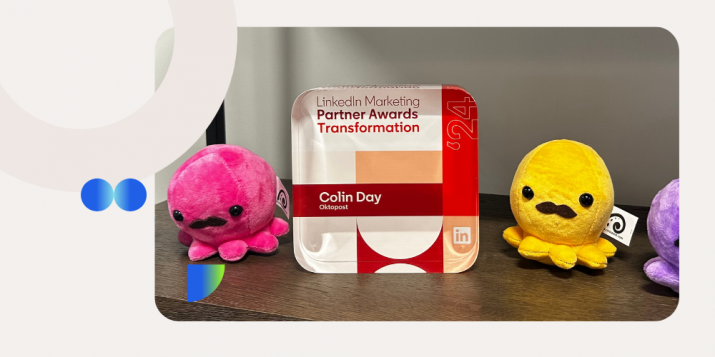
Inbound vs. outbound leads: how to tell the two apart in your CRM
Lead generation is the lifeblood of any marketing team. The quest for quality leads has become daunting in a dynamic landscape where competition is fierce, and budgets are tighter than ever. Yet, amid the myriad complexities you face as a marketer, one significant barrier stands out: the ability to distinguish and effectively track the sources of leads within Customer Relationship Management (CRM) systems.
61% of marketers rank lead generation as their greatest challenge in 2023. Success in this competitive landscape requires differentiating between inbound and outbound leads, as their needs and awareness levels tend to differ vastly.
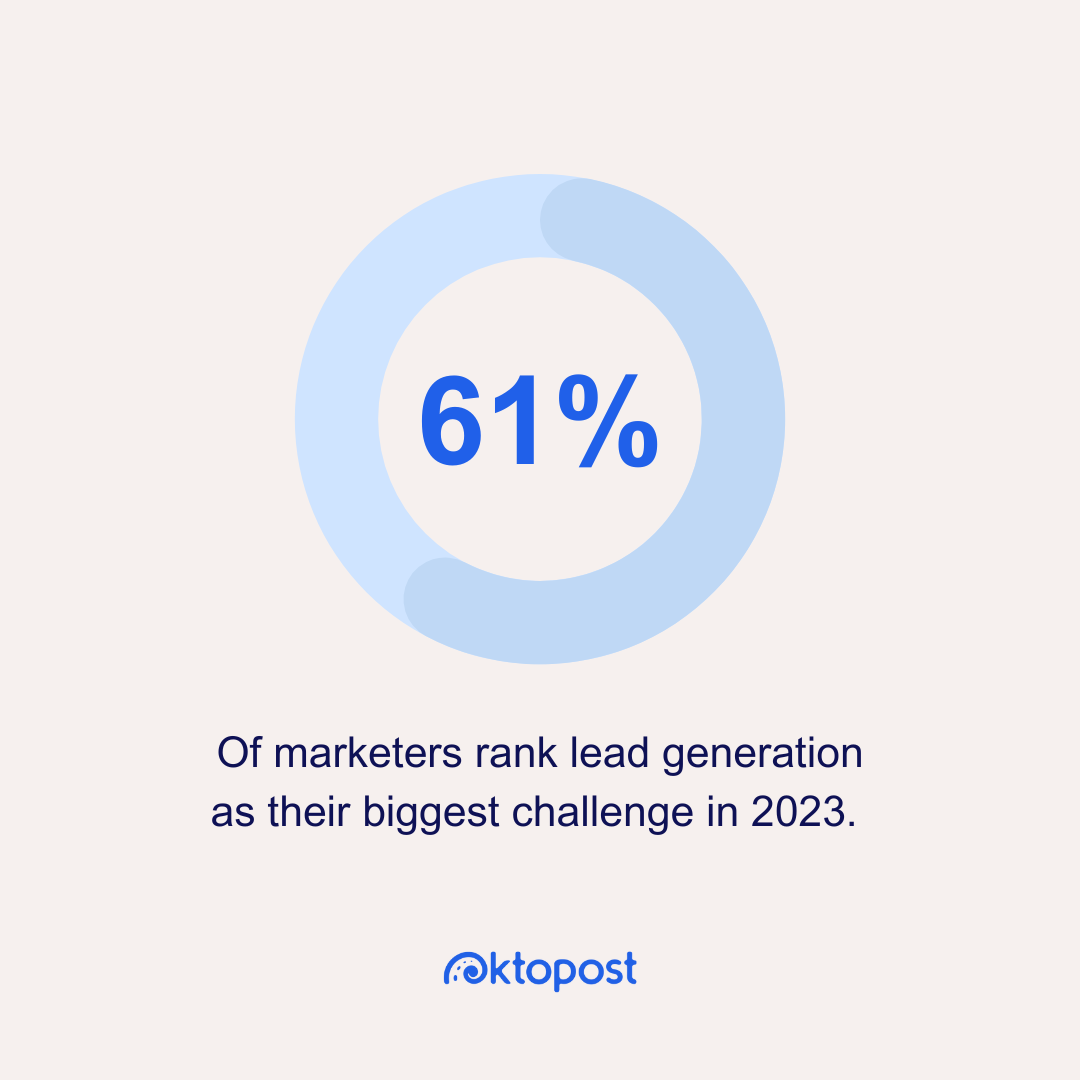
Source: Hubspot
Jump Ahead
- Why distinguish between inbound vs. outbound leads in your CRM?
- Navigating the Difference between Inbound vs. Outbound Leads in Your CRM
- Measuring and Optimizing Success in Inbound vs. Outbound Leads
- Perfecting the Customer Journey with Your CRM
Why distinguish between inbound vs. outbound leads in your CRM?
Your CRM is essentially the ‘holy grail’ for your revenue team. Distinguishing between inbound and outbound leads enables your sales representatives to take the right action to move a sale forward.
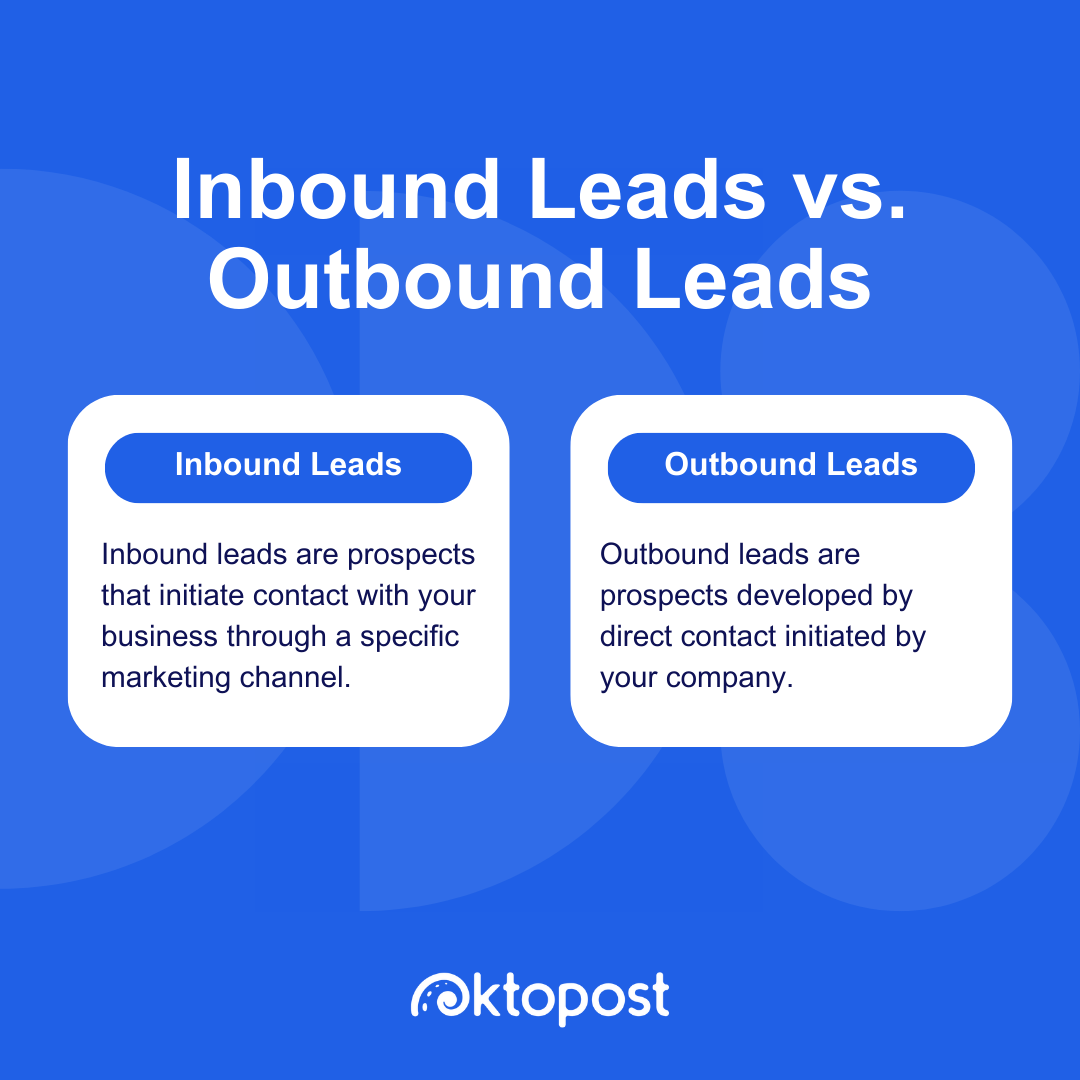
Inbound leads are those who have already stepped into your world. They typically originate from your company’s website or marketing communications and have already interacted with your brand, possibly through engaging content or social selling strategies, skipping the traditional SDR nurturing process.
Conversely, outbound leads are uncharted territory. They may not even know your brand yet. You will need to introduce your brand using tactics such as SDR outreach and carefully crafted email sequences to grab their attention and initiate their journey toward conversion.
This differentiation is essential for CRM management as it allows you to understand what digital marketing channels work best, craft personalized messaging, and tailor strategies to nurture prospect relationships. With this insight, you can allocate resources accordingly and scale marketing campaigns based on their success rates.
Navigating the difference between inbound vs. outbound leads in your CRM
Lead source field
The lead source field is critical in any CRM system to separate inbound and outbound leads. This distinction must be clear to your sales team so they understand how to proceed with each lead. If it’s an inbound lead, your sales team should delve into the lead’s journey to understand their specific interests.
In contrast, handling outbound leads is more straightforward for your sales team. Properly attributing this field is a simple way to easily flag the difference between inbound and outbound leads, enabling your team to effectively guide each lead through their unique sales journey.
Journey tracking
Your team must monitor the various touchpoints a potential customer has with your brand throughout their journey from a Marketing Qualified Lead (MQL) to a Sales Qualified Lead (SQL). Assigning specific values to these touchpoints is crucial for creating a robust lead-scoring model to assess qualification and conversion potential.
If you’re one of the 94% of B2B marketers who rank Account-Based Marketing (ABM) as one of your most important marketing efforts, creating a lead-scoring model that accounts for multiple inbound and outbound touchpoints is particularly critical. This is because, especially within ABM campaigns, each lead can have numerous touchpoints, some of which are inbound while others are outbound.
By implementing a multi-touch attribution model that assigns appropriate weights to each touchpoint based on its significance to the lead’s progression, you can better understand lead behavior and make informed decisions that improve the likelihood of conversion.
Social media touchpoints are particularly relevant for your journey tracking and lead scoring, as they reveal the interests of potential customers. You can use a tool like Oktopost to track all social media engagement data and ensure it is synced up with your CRM to provide a comprehensive and contextual picture of your lead’s journey from social media and beyond.
Lead description and notes
The notes and descriptions within your CRM are crucial for documenting your team’s interactions with leads and relevant details about their journey. After engaging with a prospect, your sales representative should record pertinent information, including the lead’s expressed needs, challenges, and product interests.
It should also include information such as their Google search intent and the specific elements that piqued their interest in the messages received from SDRs. This helps distinguish outbound from inbound and provides context into the prospect’s reasons for engaging with your organization.
Engagement level
A lead’s likelihood of converting into a customer increases with higher engagement. Therefore, it is imperative to document the engagement level of your leads within your CRM. Inbound leads, who interact with your brand through multiple touchpoints such as content, social media, and various other inbound channels, typically exhibit a heightened interest in your brand and are consequently more engaged. In fact, marketers report that inbound marketing strategies yield 10x more conversions than outbound.
In contrast, outbound leads are often entered into the system after a single touchpoint, such as responding to an outreach email. Therefore, their level of interest and engagement may be less significant. Despite its importance, measuring engagement can be challenging. With the help of social media management tools like Oktopost, you can track social media engagement rates and dive into the specific content, campaigns, networks, and programs that drove those engagements.
You can gain insights into your lead’s needs and what drives them to connect with your brand. Ideally, this invaluable data can be accessed within your CRM, enabling your revenue team to better understand the buyer’s interests and provide the right content and conversation topics that allow them to convert.
Recommended for further reading
Measuring and optimizing success in inbound vs. outbound leads
The work doesn’t stop after distinguishing between inbound and outbound leads in your CRM. You should then create specific campaigns targeting inbound and outbound opportunities. Ensure you build lead qualification processes, evaluate lead quality, and continuously analyze and adapt your campaigns according to their performance.
Here’s how to turn your plans into action:
Defining a lead qualification process
A Lead Qualification Process includes defining what constitutes an MQL and an SQL according to your organization. MQLs are prospects who have shown interest in your products or services but may not be ready to purchase, while SQLs are more likely to convert into paying customers. Your company must agree on their unique criteria for these classifications based on their specific goals and industry.
Some common actions that result in becoming an MQL include:
- Downloading content such as a report, e-book, or whitepaper
- Filling out a contact form
- Visiting a landing page
- Signing up for a newsletter
- Interacting with a specific number of posts on social media
Some common actions that result in becoming an SQL include:
- Responding to an outreach email
- Visiting the company’s pricing page
- Filling out a demo form
- Scheduling a meeting with a revenue team member
- Signing up for a free trial
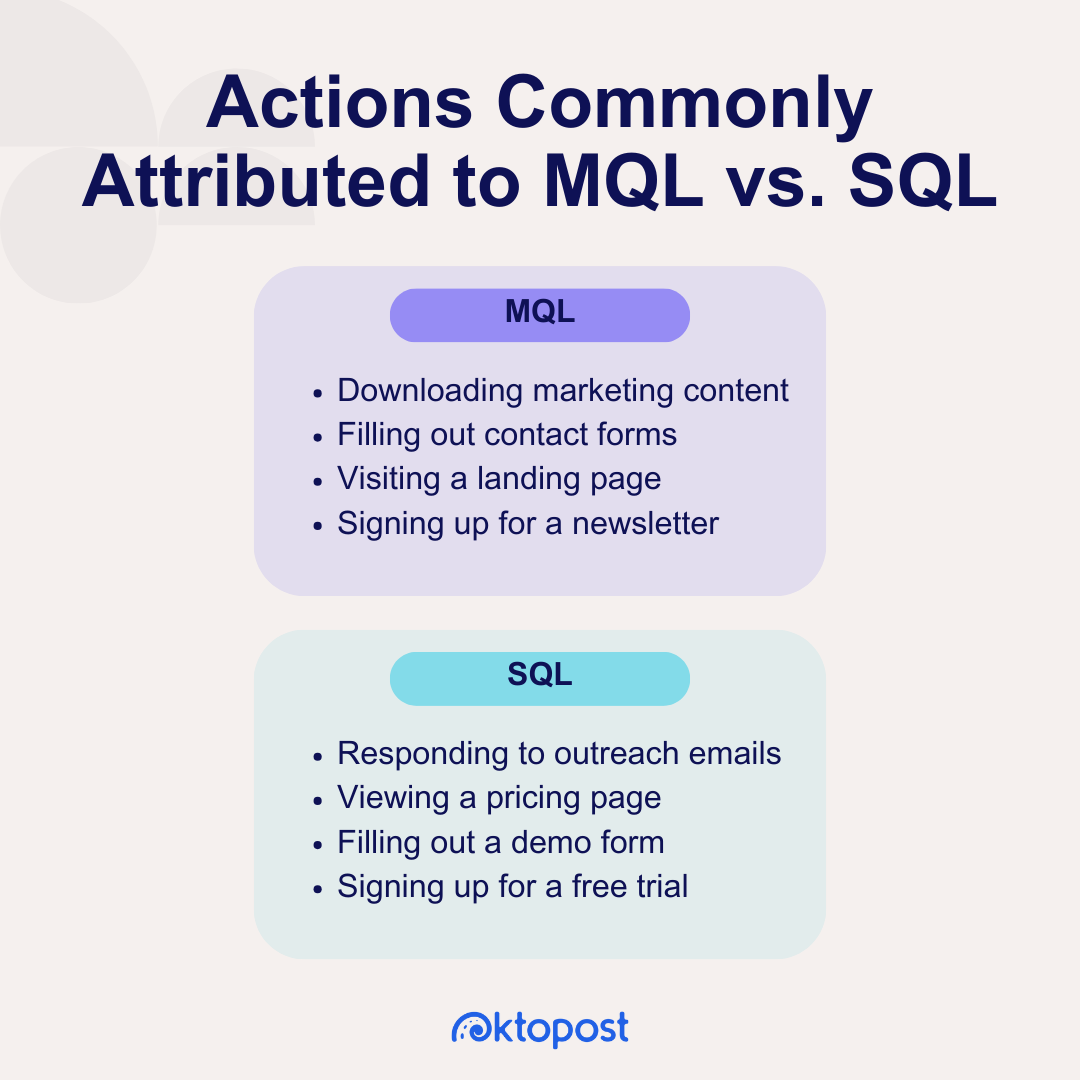
Of course, these actions will vary depending on your organization’s specified criteria.
Understanding lead quality
Once you’ve established your lead qualification process, assessing lead quality is vital. Analyze the source of your leads (inbound or outbound) and evaluate their engagement and conversion rates.
High-quality leads are more likely to result in conversions and customer retention. So, how do you know if your lead is high quality? This will vary based on your organization, but it should fit the following criteria:
- You have the correct information on your lead, such as name, email, industry, and job title
- The company fits within your ICP, meaning it’s the right size, in the right industry, and located in the right countries
- The lead has shown awareness and interest in your product through sales conversations or content/social media engagement
- The lead has a budget for your solution and has decision-making power
- You have a complete understanding of the lead’s interests and buyer journey.
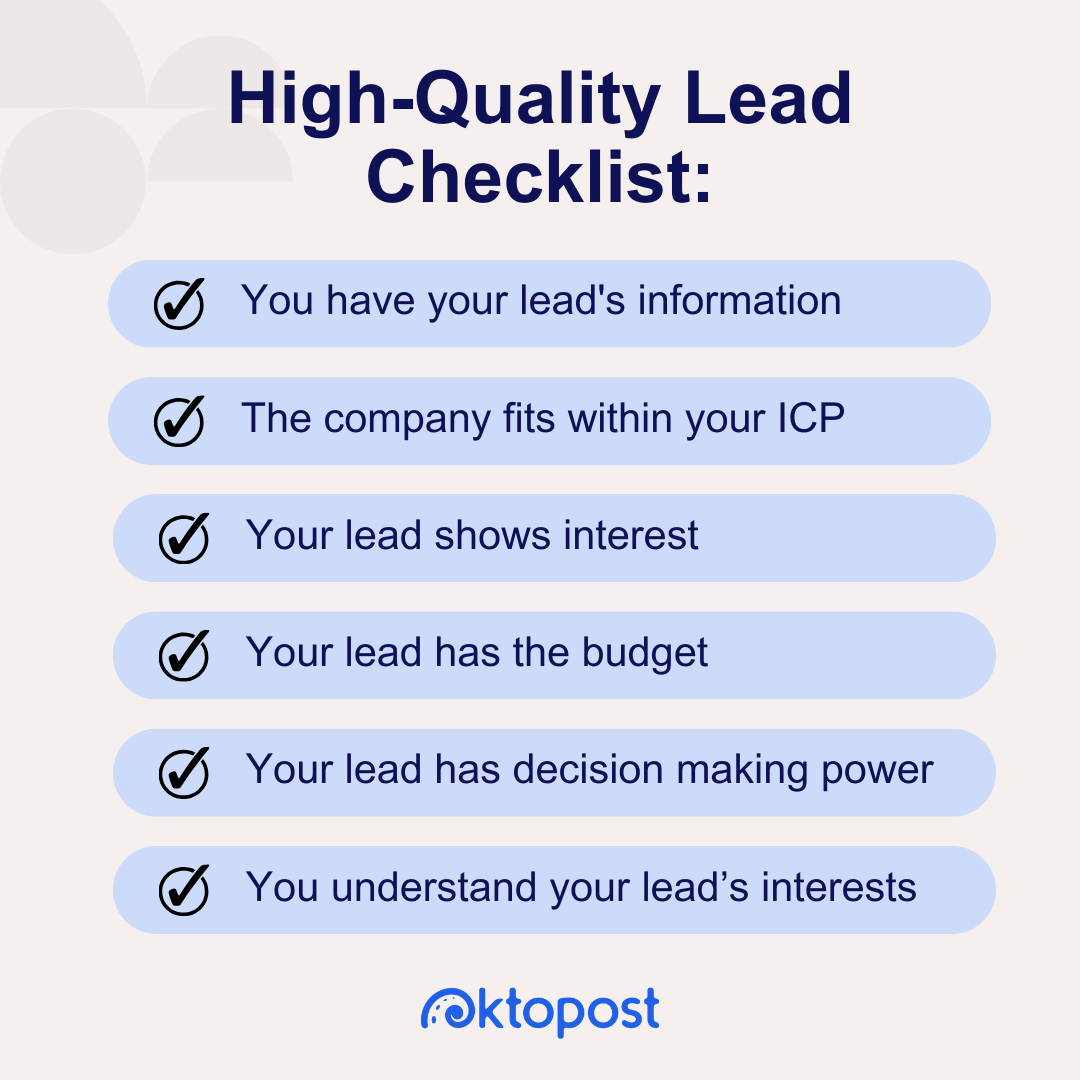
You can allocate resources more effectively by identifying which leads are more likely to convert and which channels or campaigns generate them.
Continuously analyze, adapt, and expand reach
Success measurement is an ongoing process that requires continuous analysis and adaptation. Regularly review your campaign metrics, track performance against established benchmarks, and make adjustments as needed.
If you want to take your reach to the next level, employee advocacy can be a game-changer. Encourage your employees to share and promote your content on their personal social networks. This amplifies your message and adds a personal touch, making your brand more relatable. It also allows you to tap into your employees’ networks, reaching new audiences.
Perfecting the customer journey with your CRM
Amidst fierce market competition, lead generation poses a significant challenge for enterprise marketers. Understanding each lead’s unique characteristics and needs in CRM systems is pivotal in devising effective marketing strategies.
By ensuring the right information is inside your CRM, marketers can streamline lead management and gain valuable insights, enabling sales teams to close more deals.
Oktopost makes your lead’s social activities available within your CRM, enhancing your ability to understand lead behavior and refine your nurturing strategies. With Oktopost, your marketing and sales teams can harness the full potential of your lead generation efforts, ensuring long-term business growth and success. Explore more here.

